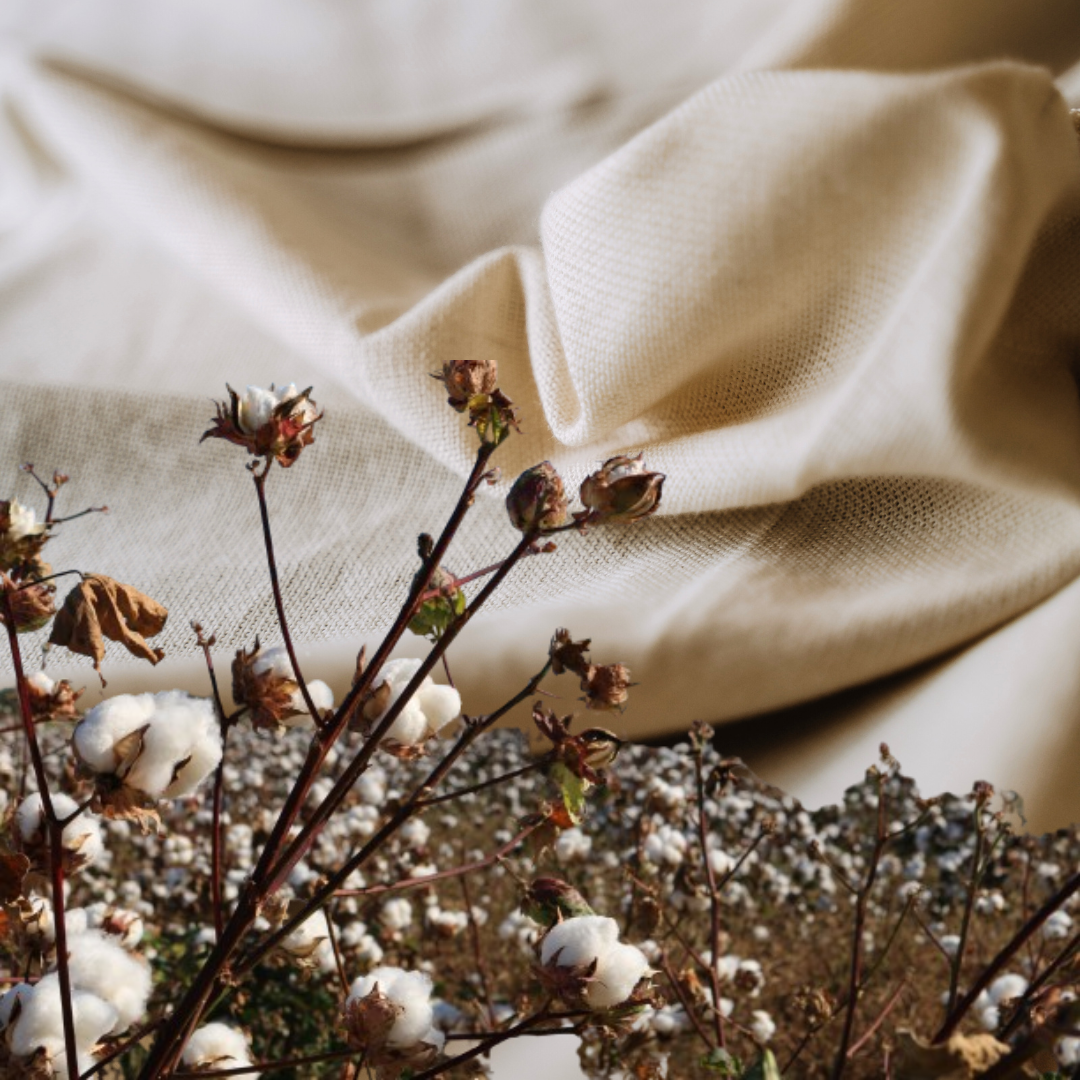What are regenerative textiles?
Regenerative textiles are made using methods that restore ecosystems, promote biodiversity, and support social responsibility across their life cycle. The production of regenerative textiles differs significantly from conventional practices. Instead, they prioritize circularity and transparency to positively impact both the environment and human well-being.
How fashion contributes to climate change
The fashion industry is one of the world's top polluters, contributing 10% of carbon emissions and 20% of wastewater every year through resource extraction, processing, and transportation.


One alarming issue lies within the fibers used in clothes. Did you know that 60% of clothing is made from plastic? The widespread use of polyester, acrylic, and nylon, which are all petroleum-based materials, shows the dominance of synthetic textiles on a global level.
The negative impact does not stop at production. On top of this, washing synthetic clothing releases plastic microfibers that harm both marine and human life by polluting the food chain.

The fast fashion phenomenon further exacerbates this environmental problem by promoting excessive consumption and short-lived trends. With the dizzying pace of mass production, more than 92 million tons of textile waste end up in landfills each year.
It’s clear that the status quo has to change—sticking to business-as-usual in the fashion industry will not help us meet critical climate goals.
Addressing climate change requires a multifaceted approach and adopting regenerative textiles is one of many solutions to reduce the environmental impact of the fashion industry.
“Regenerative” goes beyond “sustainable”
While "sustainable" has been thrown around a lot in recent years, "regenerative" goes beyond simply being “climate-neutral” and instead focuses on climate-positive solutions that can actively restore ecosystems.

It all starts with the materials in our clothes. By using materials grown using regenerative agriculture practices, producers ensure that natural resources are replenished and that the soil is enriched for future generations of farmers.
What is regenerative agriculture?

Regenerative agriculture promotes biodiversity, healthy soil, and carbon capture leading to increased resilience against climate change.
Prioritizing biodiversity through biodynamic farming techniques promotes a healthier ecological balance. For example, conventional cotton is linked to land degradation, water-intensive production, and chemically intensive processes such as pesticide use. On the other hand, growing regenerative cotton is an alternative that requires less water and no synthetic pesticides or fertilizers.

Capturing carbon and retaining it within the soil is also a pivotal aspect of regenerative agriculture. Techniques such as cover cropping and minimum tillage enable soil to capture more carbon from the atmosphere, helping mitigate climate change and improving soil fertility.
While the term “regenerative agriculture” is relatively new, the concept has been around for a long time. Closely connected with nature, indigenous communities worldwide have been practicing regenerative methods for millennia. This indigenous knowledge reflects the responsible use of natural resources and can be seen in traditional textiles made from natural fibers, among other cultural practices.
By applying regeneration principles in growing raw materials for textiles, the fashion industry has an opportunity to reduce its ecological footprint and contribute positively to climate efforts.
Regenerative textiles in fashion
When it comes to adopting regenerative textiles, we’d like to highlight the work done by notable organizations in this space:
The Regenerative Organic Alliance spearheads the Regenerative Organic Certified® program for food, fiber, and personal care ingredients. This certification represents the highest standard for organic agriculture in the world with criteria emphasizing soil health, animal welfare, and social fairness.
Textile Exchange’s Climate+ strategy aims to transform the fashion industry's raw material supply chain to reduce greenhouse gas emissions by 45% by 2030. Their approach goes beyond accounting for emissions, instead, they guide the industry toward holistic sustainability.
Fibershed focuses on regional fiber systems and champions Climate Beneficial™ Agriculture. Their Climate Beneficial Verification Program supports farmers in implementing carbon farming practices and provides monitoring tools to track progress.
For designers and brands, the above links are a good starting point to learn more about regenerative fashion models and where to source regenerative fabrics.
For consumers, you can look for brands that are committed to ethical sourcing and regenerative practices throughout their supply chain. Patagonia and Eileen Fisher are among the sustainable brands embracing regenerative materials such as cotton and wool in their clothing lines.

Another example is BAM Clothing, a UK-based activewear brand that uses bamboo-based textiles. Bamboo is a highly renewable resource that grows quickly and requires minimal irrigation and fertilization. In our webinar with BAM Clothing last November, we discussed the potential of bamboo as a regenerative textile and its role in forest conservation. Read the webinar recap here.
By consciously integrating such textiles into our wardrobes and promoting their use among designers and brands, we can collectively help shift the fashion industry away from unsustainable practices towards a regenerative future.
Weaving regeneration into climate efforts
Regenerative textiles are not the single solution for the challenges facing the fashion industry today, but they are an important step in the right direction.
The future implications of regenerative textiles remain hopeful as we discover (and rediscover) materials and technologies that can support a circular economy and create a positive impact.
Here at Panublix, we are dedicated to making plant-based materials accessible to weavers and designers not only within the Philippines but also globally. To date, Panublix has connected over 100 brands and designers worldwide with fibers, yarns, and textiles made from abaca, cotton, and pineapple.

As a sourcing platform for tropical yarns and textiles, we recognize our responsibility to adopt regeneration and are actively exploring methods to ensure our products meet standards. We intend to pursue certifications, acknowledging that they are notably costly and tedious processes that require community-wide engagement involving partner farmers, producers, and guidance from experts.
While we are on a long and formidable journey, we remain steadfast in our commitment to textile innovation starting with locally-produced fibers and fabrics. Read more about our mission.
Further reading
-
Climate emergency: The importance of investing in climate action
-
What Is Regenerative Fashion? - Fashion Revolution
Sources
Graphic adapted from “Figure 1 - From business as usual sustainability to regenerative sustainability” in Exploring the Potentials of ICT Tools for Human-Centric Regenerative Design. Retrieved January 8, 2024, from https://www.researchgate.net/figure/From-business-as-usual-sustainability-to-regenerative-sustainability-Source-11_fig1_324592073
Fashion’s tiny hidden secret. (2018, June 27). UN Environment Programme. Retrieved January 8, 2024, from https://www.unep.org/news-and-stories/story/fashions-tiny-hidden-secret
Putting the brakes on fast fashion. (2018, November 12). UN Environment Programme. Retrieved January 8, 2024, from https://www.unep.org/news-and-stories/story/putting-brakes-fast-fashion
Waste – is it ‘really’ in fashion? : Fashion Revolution. Retrieved January 8, 2024, https://www.fashionrevolution.org/waste-is-it-really-in-fashion.

